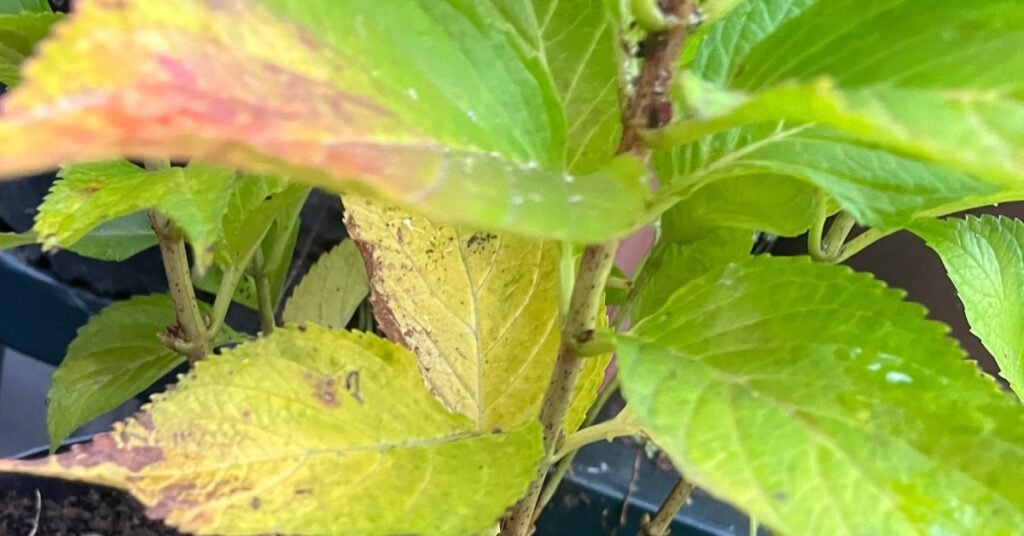Introduction
Hydrangea Leaves Turning Yellow, with their lush foliage and stunning blooms, are a beloved addition to any garden. However, when those vibrant green leaves start to turn yellow, it can be a cause for concern. In this comprehensive guide, we’ll delve into the seven main reasons behind this perplexing phenomenon and provide actionable solutions to restore your Hydrangea Leaves Turning Yellow.
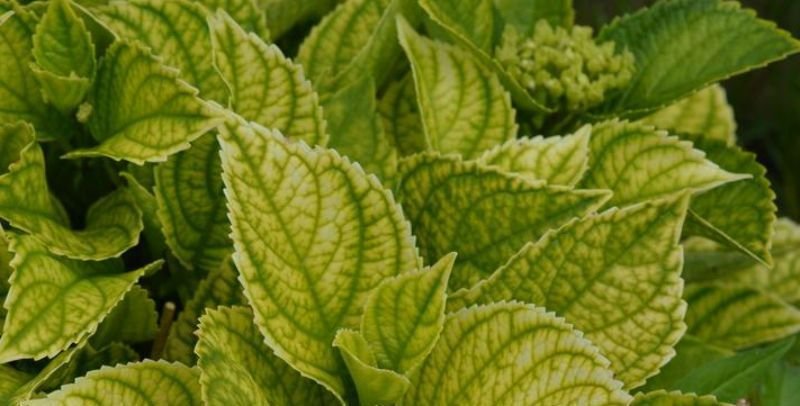
Table of Contents
Water Woes: The Root of the Issue
Overwatering: Drowning in Excess Overzealous watering can suffocate hydrangea roots, leading to Hydrangea Leaves Turning Yellow. When soil remains consistently soggy, roots struggle to absorb oxygen, resulting in nutrient deficiencies and leaf discoloration Reduce overwatering.
Underwatering: Thirsty Hydrangeas Conversely, underwatering deprives hydrangeas of vital moisture, causing stress and eventual Hydrangea Leaves Turning Yellow. Insufficient watering disrupts the plant’s ability to transport nutrients, leaving leaves parched and pale.

Soil Scenarios: Finding the Right Balance
pH Imbalance: Acidic Agony Hydrangeas thrive in slightly acidic soil, but extremes can trigger leaf yellowing. A pH imbalance disrupts nutrient uptake, leading to nutrient deficiencies and unsightly foliage.
Nutrient Deficiency: Hungry Hydrangeas Inadequate soil nutrition can manifest in yellowing leaves as vital nutrients become scarce. Nitrogen, iron, and magnesium deficiencies are common culprits, signaling the need for soil supplementation.
Light Dilemma: Finding the Goldilocks Zone
Sunburn: Scorching Consequences Excessive sunlight exposure can scorch Hydrangea Leaves Turning Yellow and wither. Providing partial shade or shelter during peak sunlight hours can prevent leaf damage and maintain vibrant foliage.
Shade Deficiency: Seeking Shelter Insufficient shade can also spell trouble for hydrangeas, especially in hot climates. Without respite from the sun’s harsh rays, leaves may yellow as they struggle to regulate moisture levels and photosynthesize effectively.
Pests and Predicaments: Nature’s Intruders
Common Pests: Tiny Troublemakers Pests like aphids, spider mites, and leafhoppers can wreak havoc on hydrangea leaves, feeding on sap and causing yellowing, wilting, and distortion. Vigilant pest management is essential to preserve leaf health.
Fungal Infections: Invisible Invaders Fungal diseases like powdery mildew and botrytis can infect hydrangea leaves, leading to yellow spots, blotches, and premature leaf drop. Proper sanitation, air circulation, and fungicidal treatments are crucial for disease prevention.
Environmental Extremes: Weathering the Storm
Temperature Extremes: Hot and Cold Challenges Hydrangeas are sensitive to temperature fluctuations, with extreme heat or cold causing leaf stress and discoloration. Mulching, shading, and proper watering can help mitigate temperature-related leaf damage.
Wind Damage: Blustery Battles Strong winds can physically damage hydrangea leaves, causing tears, bruises, and yellowing. Providing windbreaks and staking taller varieties can protect delicate foliage from wind-induced stress.
Root Issues: Delving Beneath the Surface
Root Rot: Suffocating Roots Waterlogged soil can lead to root rot, compromising the plant’s ability to absorb water and nutrients. Yellowing leaves are often a sign of root distress, necessitating immediate action to salvage plant health.
Root-Bound Plants: Stunted Growth Hydrangeas confined to small containers or cramped planting spaces may become root-bound, hindering nutrient uptake and leading to Hydrangea Leaves Turning Yellow. Repotting or transplanting can provide relief and promote healthy root growth.
Chemical Concerns: Navigating the Dos and Don’ts
Pesticide Toxicity: Poisonous Pitfalls Misuse of pesticides can harm beneficial insects and intoxicate hydrangea leaves, resulting in discoloration and leaf drop. Opt for organic pest control methods whenever possible to minimize chemical exposure.
Fertilizer Misuse: Feeding Follies Excessive fertilizer application can burn hydrangea roots and disrupt nutrient balance, causing leaf yellowing and stunted growth. Follow recommended dosage guidelines and opt for slow-release fertilizers to avoid nutrient overload.
Seasonal Shifts: Nature’s Cycle
Autumn Transitions: Changing Colors As autumn approaches, hydrangea leaves naturally undergo color changes, Hydrangea Leaves Turning Yellow, orange, and red before falling. This seasonal shift is normal and not cause for concern.
Winter Preparation: Frosty Precautions Before winter sets in, take precautions to protect hydrangeas from frost damage, which can cause leaf discoloration and dieback. Mulching, covering, and providing shelter can safeguard plants during cold snaps.
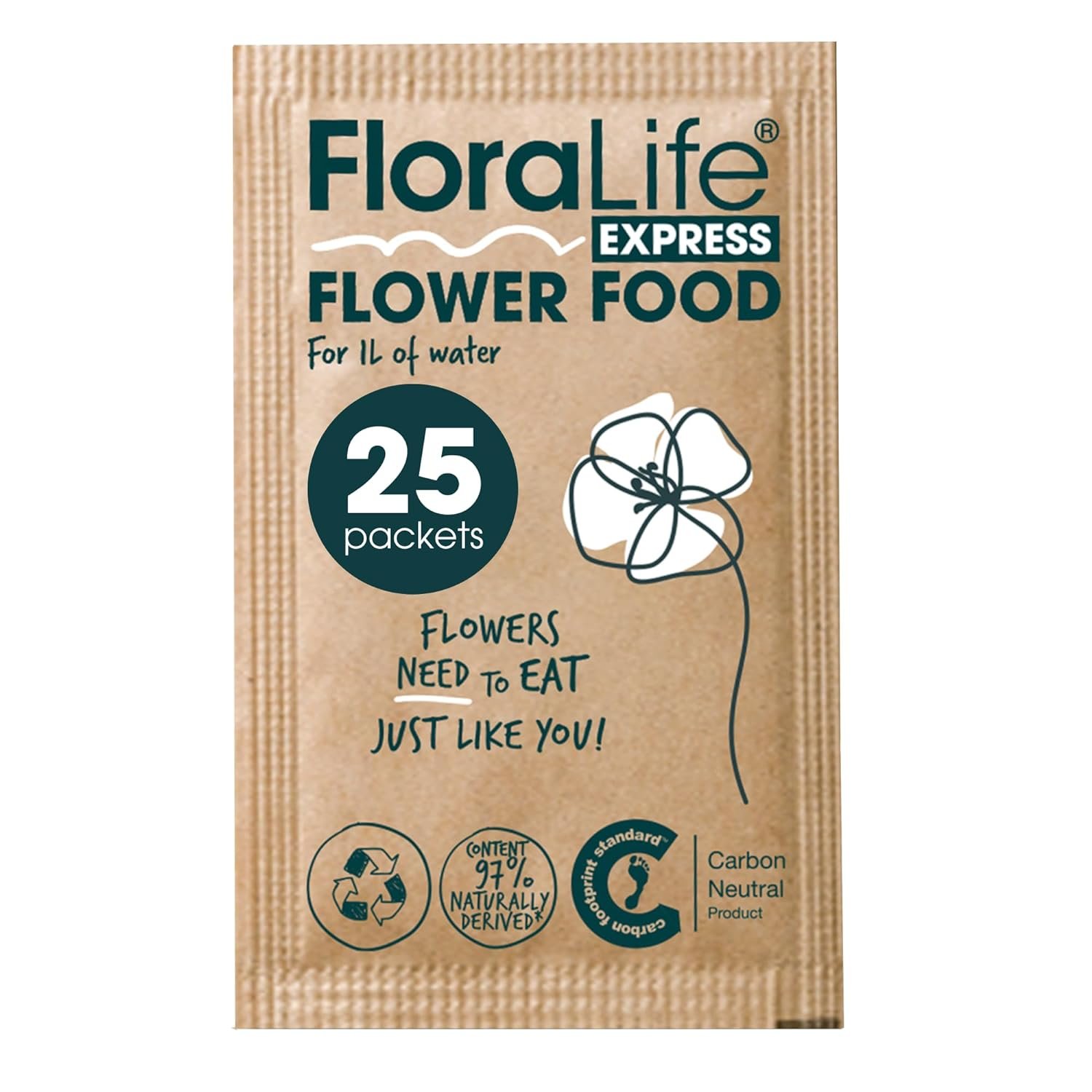
FLORALIFE FLOWER FOOD
FLORALIFE FLOWER FOOD is a multi-nutrient floral food formula that provides optimal hydration, nutrition, and longevity to your favorite flowers!
Hydrangea Varieties: Understanding Diversity
Varietal Susceptibility: Different Strokes Different hydrangea varieties exhibit varying levels of susceptibility to leaf yellowing, with some more resilient than others. Research your specific hydrangea type to understand its unique needs and preferences.
Optimal Conditions: Tailoring Care Each hydrangea cultivar thrives under specific growing conditions, including soil type, sunlight exposure, and moisture levels. Tailor your care regimen to suit your hydrangea’s requirements for optimal leaf health.
Cultural Practices: Gardening Know-How
Pruning Techniques: Precision Pruning Improper pruning can stress Hydrangea Leaves Turning Yellow. Learn the correct pruning methods for your hydrangea variety to encourage healthy growth and vibrant foliage.
Mulching Benefits: Protective Measures Applying a layer of organic mulch around hydrangea roots helps retain moisture, regulate soil temperature, and suppress weeds, promoting lush, green foliage. Mulching is a simple yet effective way to enhance leaf health.
Remedial Actions: Restoring Leafy Luster
Quick Fixes: Immediate Solutions Addressing yellowing leaves promptly can prevent further damage and encourage recovery. From adjusting watering habits to implementing pest control measures, swift action is key to restoring leaf health.
Long-Term Strategies: Sustainable Solutions To prevent future leaf yellowing, adopt sustainable gardening practices that promote overall plant health. From improving soil quality to providing optimal growing conditions, proactive care is the cornerstone of vibrant hydrangea foliage.
Conclusion
In conclusion, understanding the reasons behind Hydrangea Leaves Turning Yellow is essential for effective diagnosis and treatment. By addressing underlying issues such as watering imbalances, soil deficiencies, environmental stressors, and pests, you can restore your hydrangea’s leafy allure and ensure long-term vitality.
Why are my Hydragea leaves turning yellow ?
FAQ for Hydrangea Leaves Turning Yellow
- What are the first signs of hydrangea leaf distress?
The first signs of hydrangea leaf distress include discoloration, wilting, yellowing, browning of leaf edges, and unusual spotting or mottling.
- How often should I water my hydrangea to prevent leaf yellowing?
Hydrangeas typically need regular watering, about 1-2 times per week, depending on factors like soil type, weather conditions, and the size of the plant. Consistent moisture helps prevent leaf yellowing.
- Can I save a Hydrangea Leaves Turning Yellow?
If your hydrangea plant has severely yellowed leaves, it may be possible to save it by addressing the underlying issue causing the yellowing. This could involve adjusting watering habits, improving soil drainage, providing adequate nutrients, or treating for pests or diseases.
- Is it normal for hydrangea leaves
While some leaf yellowing is normal as hydrangea plants age or experience environmental stressors, significant or widespread yellowing may indicate an underlying problem that needs attention. Regular monitoring and proper care can help maintain the health and appearance of hydrangea leaves.

